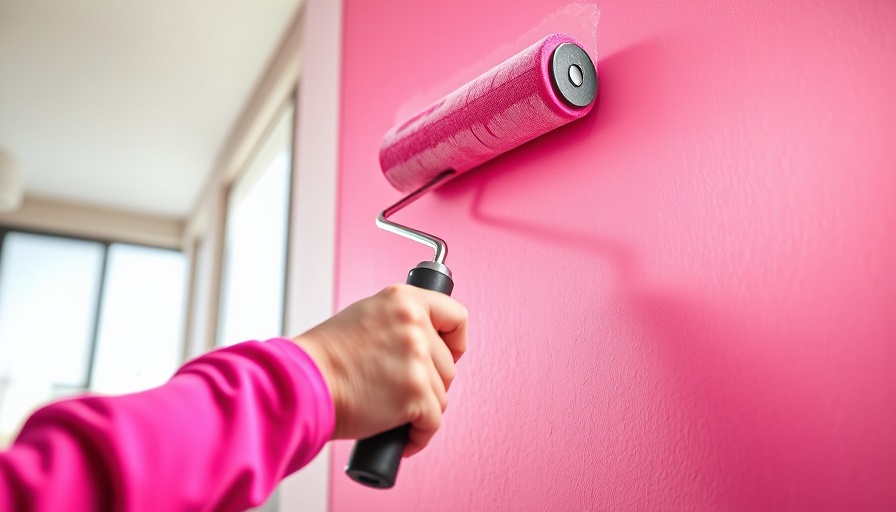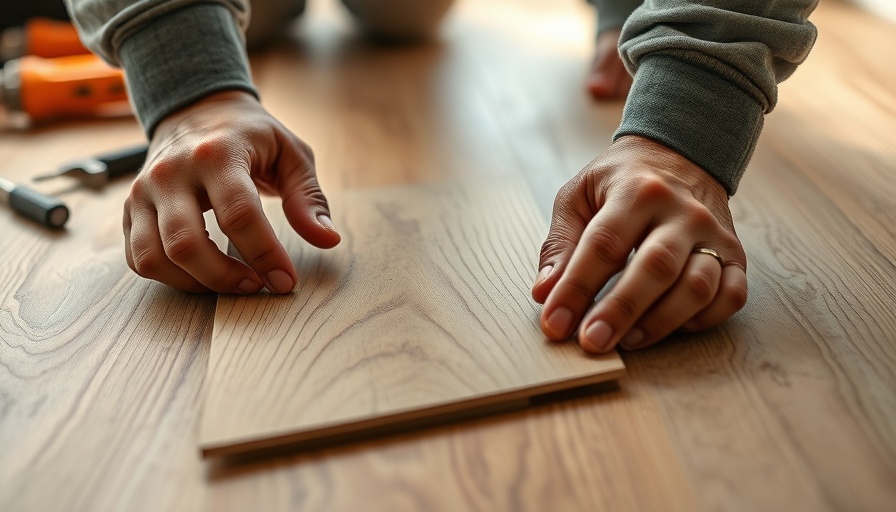
Does Dark Paint Really Keep Your Home Warmer?
If you're contemplating a switch to vibrant dark hues for your home’s exterior, it’s a decision that could be more than just aesthetic. Dark colors can absorb more sunlight, raising the internal temperature, which is a boon in colder climates. As Jim Marino, CEO at Pinnacle Home Improvements, notes, the color of your home matters for energy efficiency, but it exists among several contributing factors, such as insulation and ventilation.
Factors Affecting Heat Retention
It's essential to understand how different materials and house designs play into the overall effectiveness of a darker exterior. For instance, metal siding heats up more quickly compared to wood, while brick retains warmth effectively. Additionally, the local climate can drastically affect your energy efficiency; a dark-colored house in a sunny location like Florida may turn into an oven, whereas it might be a warm haven in the icy Alaskan winters.
Choosing the Right Shade: Too Dark or Just Right?
When deciding how dark to go, consider the Solar Reflectance Index (SRI)—a metric that measures how much solar energy a surface absorbs. Dark shades like deep browns, charcoals, and navy blues, which have an SRI under 50, can certainly keep your home toasty. In contrast, hues with an SRI of 50 to 60, such as muted blues and medium grays, may offer a more balanced approach, absorbing some heat while not overwhelming your space.
Strategies for Balancing Aesthetics and Functionality
Balancing a statement with comfort might lead you to explore matte vs. glossy finishes. Matte finishes are more absorbent than satin or semi-gloss options, and incorporating paints with heat-reflective properties could help manage the temperature impact while still enjoying those deeper shades. Alex Filipuk, founder of Ideal Siding, cautions against painting vinyl siding in dark colors, as extreme heat can warp the material.
The Impact of Roof Color on Heat Retention
Interestingly, the color of your roof—often overshadowed by the walls—can significantly impact the internal climate of your home. Black roofs absorb more heat, especially in poorly insulated homes. Homeowners should weigh the benefits of heat absorption against potential summer discomfort.
Creating an Inviting Interior Environment
While you might love the elegance of deep shades, they can sometimes evoke feelings of confinement. To mitigate this, pair dark exteriors with ample natural light or lighter accents inside. This approach allows you to maintain that grounding aesthetic without sacrificing your home’s ambiance.
Expert Advice on Making the Switch
Thinking of taking the leap into a darker palette for your home? Here are some expert tips: First, assess your home’s architecture and local climate. Next, consider which materials your home employs—brick, wood, or siding impacts how heat is absorbed and retained. Finally, don’t forget the finish; a smarter choice could mean cooler days indoors.
Final Thoughts: The Comfort of a Well-Painted Home
Transforming your house into a cozy oasis with the right dark colors can be a delightful experience, but research is key. With the right information and considerations at your fingers, you can enhance not only your home's exterior but also your overall comfort and efficiency.
Are you ready to embrace a new color scheme that’s both stylish and functional? Keep these insights in mind as you make your decisions, ensuring that your home feels as good on the inside as it looks on the outside. Experiment with design while maintaining practicality, and watch as your home radiates warmth and charm.
 Add Row
Add Row  Add
Add 




Write A Comment